Deserts Dry with Microhabitats


Desert Outcomes
-
Describe the climate and soils of desert ecosystems.
-
Define what a microhabitat is and provide an example.
-
Explain how a microhabitat may be critical for survival of a species like the meerkat.

At which latitude (north and south) would you expect to find deserts?
Besides latitude, what else can cause a desert to form?
The Sahara Desert is an example of an \”arid\” dry desert. Many deserts are \”semi-arid\” with a bit more moisture.

North America has four major deserts that are primarily semi-arid. The further north Great Basin desert is the coldest, the furthest west Mojave Desert has winter precipitation (like the Willamette valley), and the furthest east Chihuahuan Desert has summer rain. The Sonoroan Desert in-between has small amounts of precipitation in both summer and winter.



Rain is infrequent, and the lack of atmospheric moisture leads to extreme swings between daytime and nighttime temperatures.
High winds move the minimal topsoil, creating unstable conditions for organisms.

The seeds that produced these desert plants landed in just the right place to germinate.
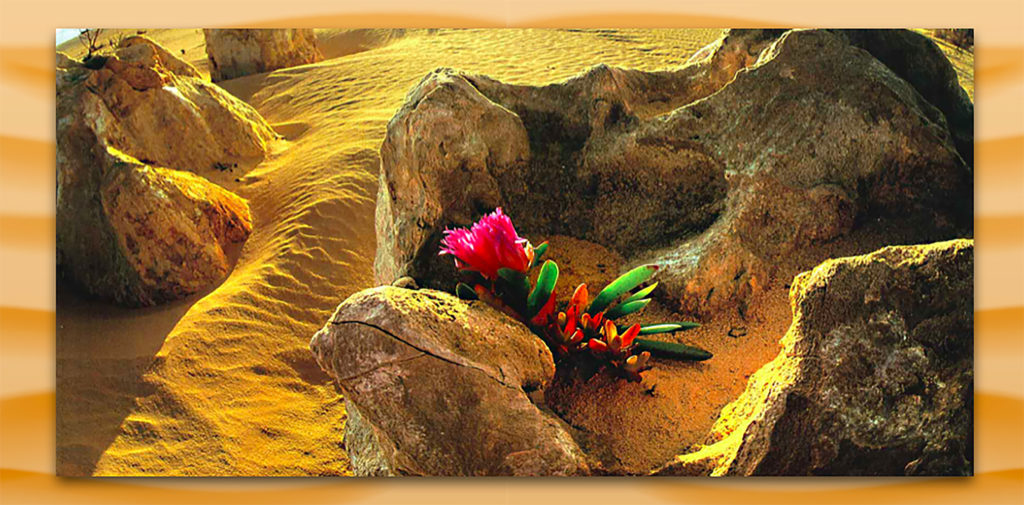
Think about what this plant has: shade from the sun, protection from the winds, dew that condenses on the rocks.
This is a microhabitat, a location within a larger ecosystem that has specific conditions.
Within a microhabitat, organisms are often in a more specific niche where they actually live.
As an analogy, our campus may be the ecosystem, you may spend a lot of time in the \”microhabitat\” of the Valley library, but your niche may be a favorite table on the fifth floor.

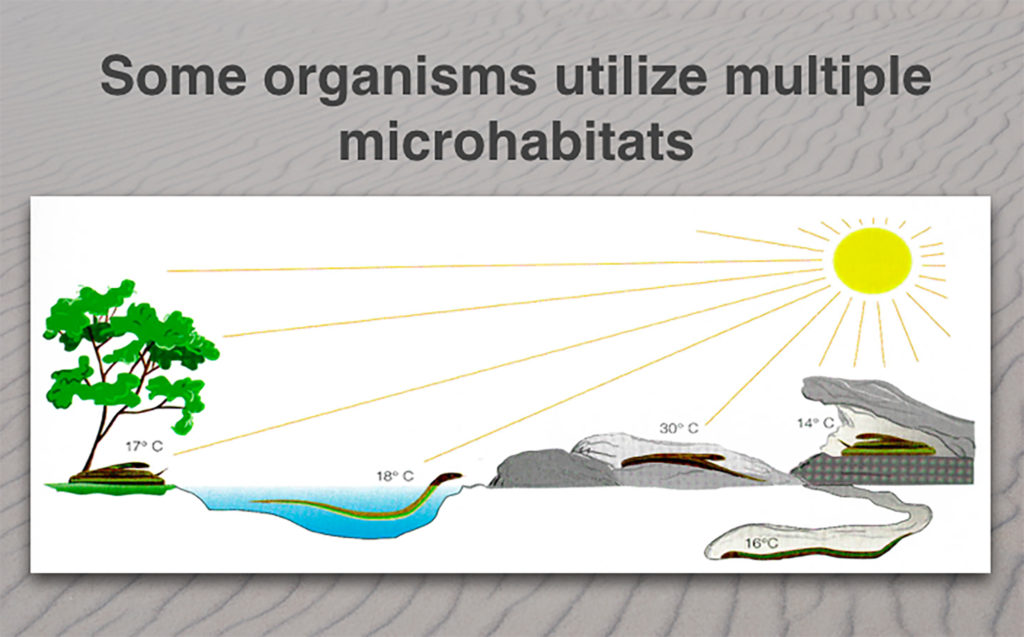
Organisms that can move may move to different microhabitats, like a cave in a desert, or underground.

On of the most beloved of desert organisms is the meerkat of the Kalahari Desert, made famous by the movie and series \”Meerkat Manor.\”
If you haven\’t seen it (don\’t!), many of the animals die in the harsh desert environment.
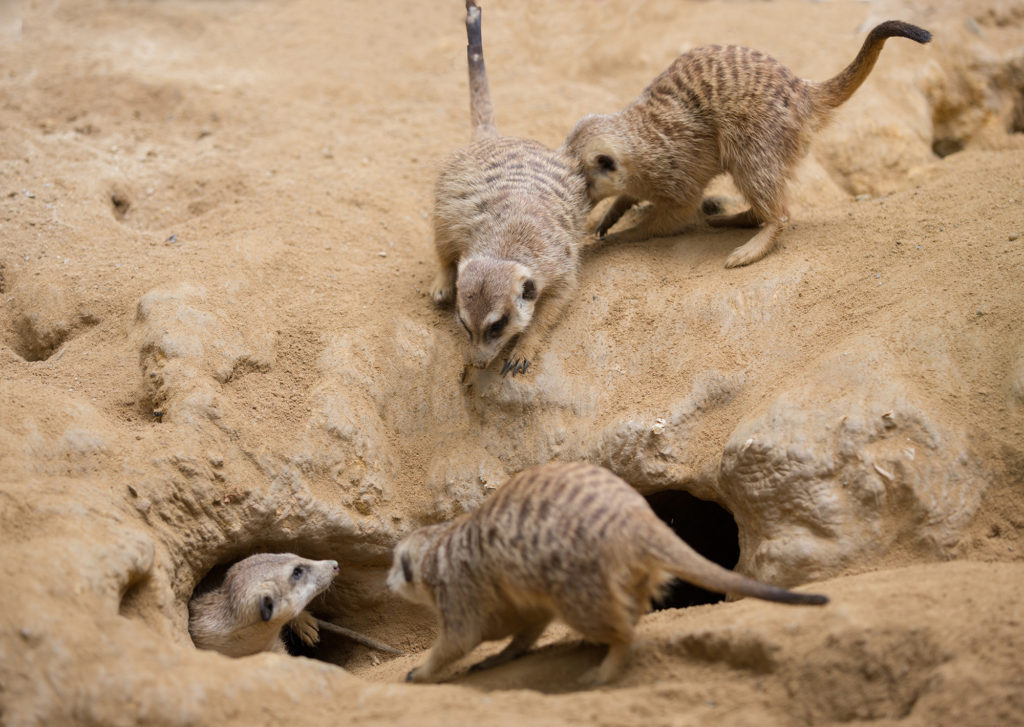
Meerkats are highly social and often live in underground burrows, or microhabitats, for protection. They also store food and raise their young in these shelters.
This looks cute, but these exposed meerkats are huddling together for warmth in an unexpected rain shower.
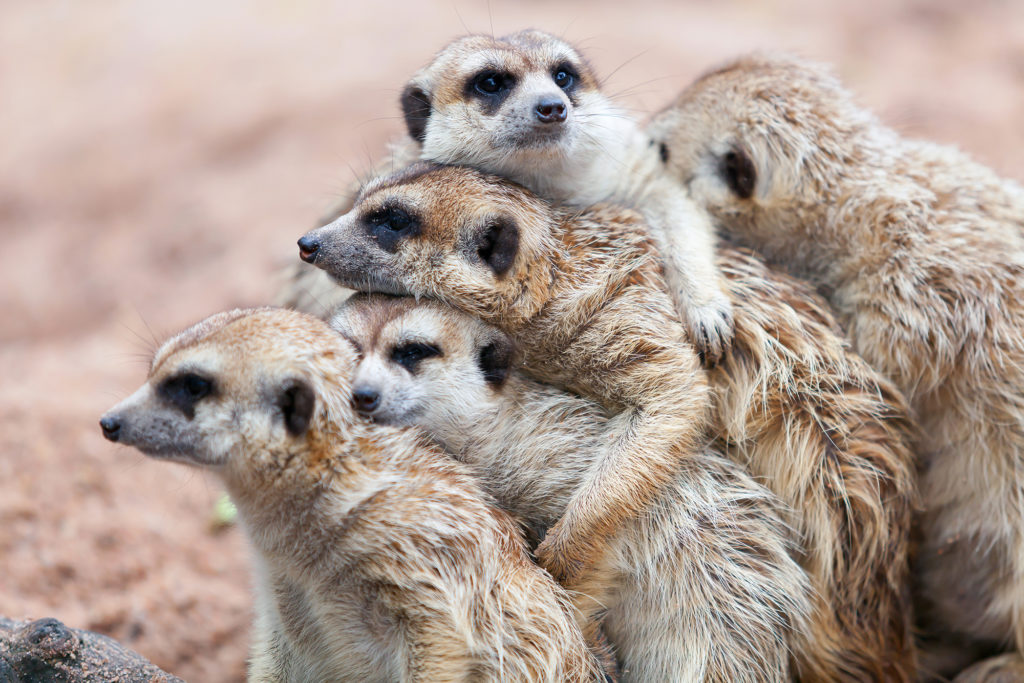
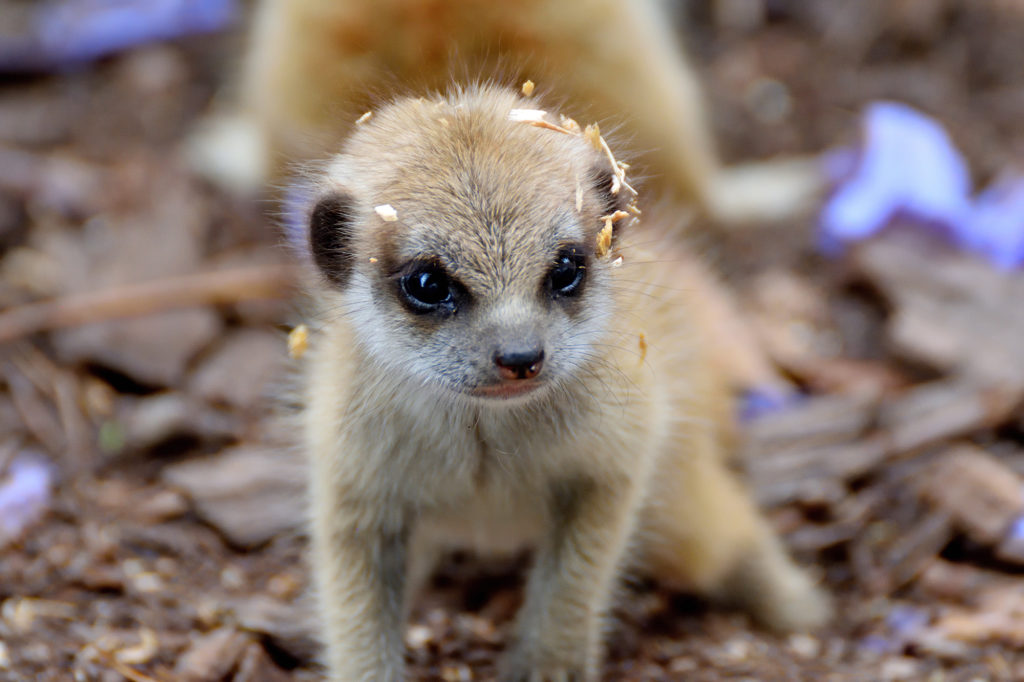
Survival of young meerkats is dependent on food and shelter.
The photo on the right is taken at a zoo where nutrition and climate are carefully controlled, resulting in a successful, but small-scale, breeding program.
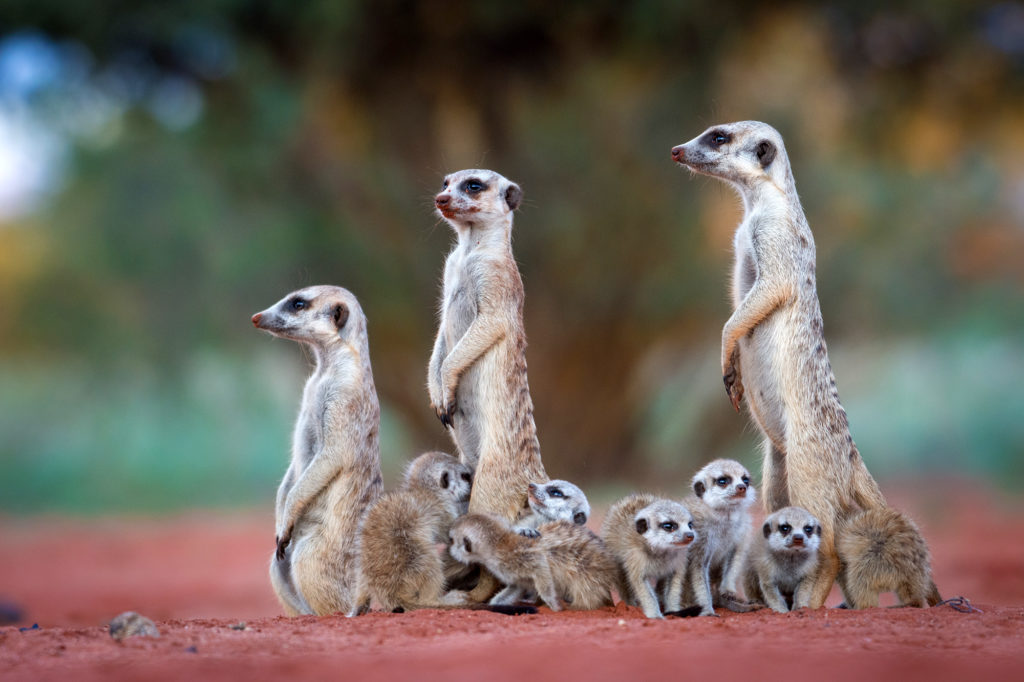
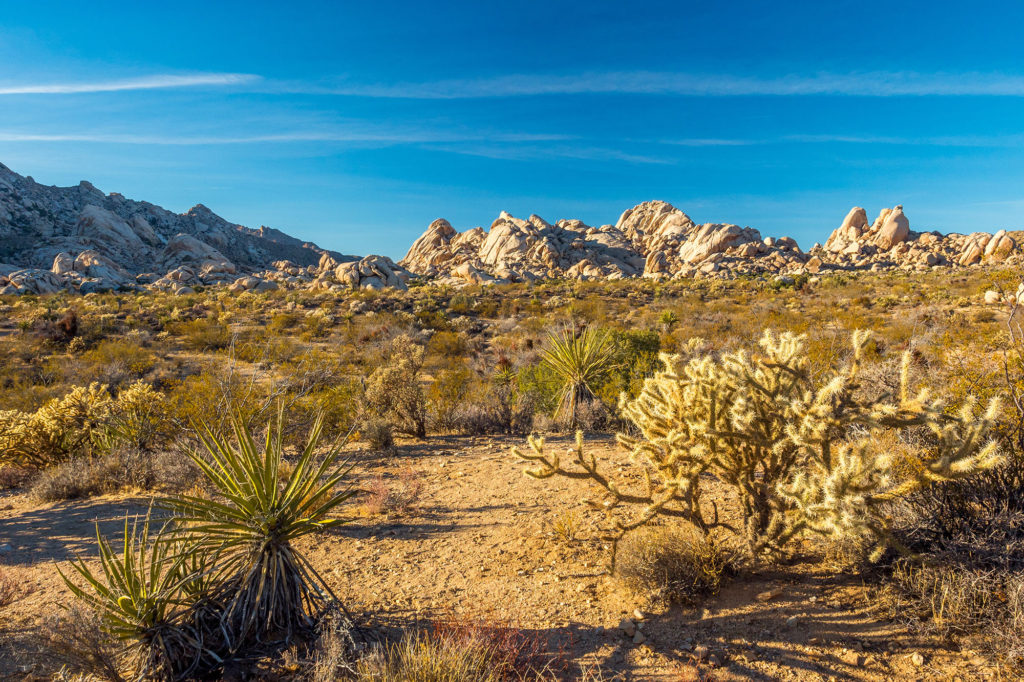
Check your knowledge. Can you:
-
describe the climate and soils of desert ecosystems?
-
define what a microhabitat is and provide an example?
-
explain how a microhabitat may be critical for survival of a species like the meerkat?